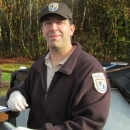Hybridization among threatened tule and non-native upriver bright (URB) fall-run Chinook salmon populations has been observed in both the White Salmon River and broodstocks at the Little White Salmon (LWS), Willard (WI), and Spring Creek (SC) National Fish Hatcheries (NFH). Previous genetic studies identified a need to evaluate the impact of these hatchery operations on the native White Salmon River tule population by evaluating whether hatchery-origin tule x URB hybrids are straying to the White Salmon River at an elevated rate and thereby increasing hybridization rates on spawning grounds. We also desired to quantify the number of hybrids returning to spawning grounds and investigate concordance of genotypic sample classifications with phenotypic carcass identifications. To accomplish these goals, we evaluated 967 field-identified tule (n = 622) and URB (n = 345) carcass samples collected in the White Salmon River from 2013 through 2021. Carcasses were genotyped using a 344-locus GTseq panel. Analyses revealed a greater proportion of hybrids among natural-origin spawners (30%) compared to hatchery-origin spawners (11%). The overall annual proportion of hybrid spawners was 31.1%, with a greater annual mean proportion of hybrids found among field-identified tule carcasses (38.1%) relative to URBs (15.7%). A large proportion of tule carcasses were tule backcrosses (27%), which were typically recovered from spawning grounds in late October. Just three tule carcasses were hatchery-origin, but parentage-based tagging analysis combined with hatchery-marking data indicated that 30.1% of URB carcasses originated from fish spawned at LWS NFH, rather than the 11.8% inferred from physical hatchery markings. However, the proportion of hybrids among LWS NFH strays (8.2%) matched prior estimates for LWS NFH broodstock broodstock
The reproductively mature adults in a population that breed (or spawn) and produce more individuals (offspring or progeny).
Learn more about broodstock (8.4%). Overall, a greater proportion of hybrid spawners in the White Salmon River are wild-origin rather than hatchery-origin. Most of these returning hybrids display run timing intermediate to the main tule and URB spawning runs. This overlap in run timing with non-hybridized fish is expected to result in continued production of wild-origin hybrids.
Publication date
Type of document
Report
Facility
Media Usage Rights/License
Public Domain
Program
Species
FWS Focus
FWS and DOI Region(s)







